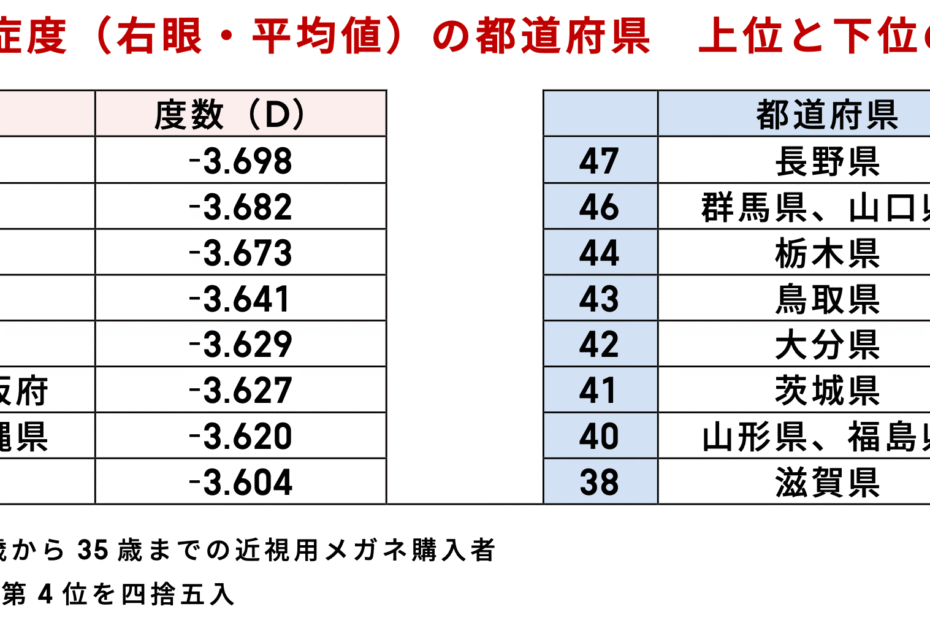[JINS Holdings Co., Ltd.] The progression of myopia begins in the early grades of elementary school. JINS and a university research institute reveal this using nationwide big data.
JINS HOLDINGS CO., LTD. Press release: July 14, 2025 To members of the media Myopia begins to progress in the early grades of elementary school. JINS and a university research institute reveal this using nationwide big data. JINS Co., Ltd. (hereinafter JINS) and the Department of Public Health, Graduate School of Medicine and Faculty of Medicine, Osaka University (hereinafter Osaka University), National University Corporation, are conducting a joint research project on refractive conditions (myopia, astigmatism, presbyopia) using big data on eyeglass sales held by JINS. Recently, an epidemiological study of refractive conditions (myopia) has suggested that there are regional differences in the severity of myopia and that myopia progression becomes evident from the early years of elementary school, and these findings were presented at the 7th General Meeting of the Japan Myopia Society on Saturday, June 28, 2025. This is the first attempt in Japan*1 to use big data from eyeglass sales to conduct an
epidemiological study on eye refraction. *1: In-house research We aim to contribute to ophthalmology by utilizing big data on glasses sales nationwide JINS is promoting research and development to prevent myopia progression through industry-academia collaboration, aiming to realize a world without myopia. Unusually for the eyewear industry, the company has an in-house R&D department and has been conducting research on light for many years. In addition, the Healthcare Division continues to take on new challenges in innovation in the healthcare field of eye health through collaboration with medical, research, and educational institutions. In this context, last year JINS began joint research on refractive conditions with Professor Ryo Kawasaki (Professor of Public Health, Department of Social Medicine, Graduate School of Medicine, Osaka University, Vice Director of AI Medical Center, Osaka University Hospital). Many previous studies had the problem of being limited to certain regions and age groups. Meanwhile, this joint research utilizes big data, including a huge amount of anonymized prescription information and purchaser attributes, obtained from over 500 JINS stores nationwide. Unlike conventional research, the research will be conducted on a large scale from multiple perspectives, and the researchers hope to provide valuable insights into changes in the epidemiological characteristics of refractive status and the associated risk of vision impairment, thereby providing useful evidence that will be useful in ophthalmology. In addition, Professor Koji Nishida and Associate Professor Shizuka Taka of the Department of Neurosensory Surgery (Ophthalmology) at the university will also cooperate in the data analysis, and will be considered from multiple perspectives. There are regional differences in the severity of myopia. The highest is Kyoto Prefecture, and the lowest is Nagano Prefecture. At the 7th General Meeting of the Japan Myopia Society, Professor Ryo Kawasaki reported on the estimation of myopic refractive power distribution obtained through collaborative research. This estimation clarified the age distribution of refractive power, regional distribution, and rate of change in refractive power for people aged 6 to 35 who purchased glasses. The results of the joint research showed that there were regional differences in the severity of myopia*2, with Kyoto Prefecture having the highest severity at -3.698D, and Nagano Prefecture having the lowest at -3.391D. In addition, when myopia develops, the rate of progression of myopia is fastest at age 7 for men and age 6 for women, and it was shown that myopia progression becomes noticeable from the early grades of elementary school. This once again highlights the importance of preventing myopia progression from a young age. It was also suggested that myopia may progress up to age 21 for men and age 28 for women. When the findings obtained this time were compared with similar public survey data, similar trends were confirmed, suggesting that the big data used in this study could also be a very useful source of information in epidemiological research. In the future, we aim to further contribute to ophthalmology by conducting epidemiological research on refractive conditions other than myopia (such as astigmatism). ※2: Differences were observed in the average degree of myopia (right eye) among purchasers of glasses for myopia aged 6 to 35 years old in each prefecture.
https://prcdn.freetls.fastly.net/release_image/27384/328/27384-328-f30dfbd1124ba56275ef2b351914eaeb-2738×1011.png ■Professor Ryo Kawasaki comment
https://prcdn.freetls.fastly.net/release_image/27384/328/27384-328-7c221a7a38849edf85c8d8634683de6d-373×497.jpg In order to understand the epidemiology of myopia, which is common in Japan, we were able to conduct research to explore its trends from the eyeglass production situation. By comparing a large number of eyeglass production situations with other epidemiological information, we believe that we have demonstrated the possibility of understanding information and trends regarding myopia in modern Japan. In addition, as an epidemiological study, it is important to conduct surveys and research over a long period of time. We are confident that this will continue to be one of the important sources of information when thinking about myopia in Japan. More information about this release *This email has been sent automatically, so please do not reply.

This article was partly generated by AI. Some links may contain Ads. Press Release-Informed Article.